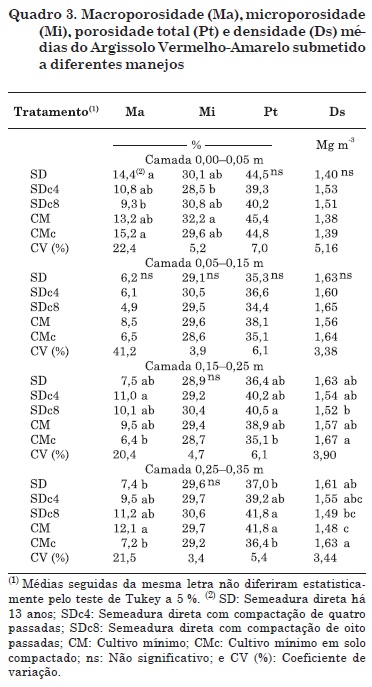The control of soil load support capacity can reduce the damaging effects of compaction. The main objective of this study was to evaluate the use of prediction models of consolidation stress under different conditions for a Hapludalf. The treatments consisted of: (a) soil under no-tillage (control) (b) soil under no-tillage with traffic intensity of 24.79 Mg km ha-1 and (c) 49.59 Mg km ha-1; (d) soil after five months of minimum tillage; and (e) soil under minimum tillage compacted by traffic (soil stress of 260 kPa and 24.67 Mg km ha-1). The soil support capacity was predicted by the following methods: (1) intersection of virgin compression line (VCL) with x-axis at zero deformation; (2) intercept of the VCL and regression with the first two points of the curve; (3) intercept of the VCL and regression with the first three points of the curve; (4) soil resistance at 2.5 % deformation; (5) method of Casagrande with sigmoidal fit of the van Genuchten equation (reference); and (6) method of Pacheco & Silva with sigmoidal fit of the van Genuchten equation. The values by the methods with 2.5 % deformation and intersection of VCL with the x-axis tended to be underestimated, compared to the reference in all layers. The regression method on the other hand varied according to the slope of the VCL; at high slopes, the values tended to be over- and at low slopes underestimated.
consolidation stress; traffic intensity; soil management



